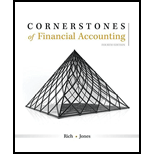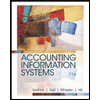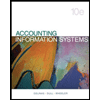
Concept Introduction:
Financial statements: Financial statements are prepared to summaries the account at the end of the period. The statements prepared are Income statement,
Balance Sheet: The Balance sheet is a summary of Assets, Liabilities and equity accounts that reports the financial position of the business as on a specific date. Assets are further classifies into Current Assets, Long Term Investments, Plant Assets and Intangible assets. And Liabilities are further classified into Current Liabilities and Long term liabilities.
To Calculate:
The missing amounts on balance sheets given.
Answer to Problem 44E
The missing amounts on balance sheets given are as follows:
| Current Assets | (a) | $ 26,900 | $ 25,000 | |
| Intangible assets | $ 10,400 | $ 9,200 | ||
| Long Terms Investments | $ 19,200 | (f) | $ 22,200 | |
| Property, Plant, and Equipment, Net | $ 85,700 | $ 92,800 | ||
| Total Assets | $ 142,200 | (g) | $ 149,200 | |
| Current Liabilities | $ 14,500 | $ 12,300 | ||
| Long Terms Liabilities | (b) | $ 35,800 | $ 34,900 | |
| Total Liabilities | $ 50,300 | (h) | $ 47,200 | |
| Contributed Capital | (c) | $ 35,000 | (i) | $ 35,000 |
| $ 56,900 | $ 67,000 | |||
| Total | (d) | $ 91,900 | (j) | $ 102,000 |
| Total Liabilities Stockholder's equity | (e) | $ 142,200 | $ 149,200 |
Explanation of Solution
The missing amounts on balance sheets given are calculated as follows:
| Current Assets | (a) | $ 26,900 | $ 25,000 | |
| (142200-10400-19200-85700) | ||||
| Intangible assets | $ 10,400 | $ 9,200 | ||
| Long Terms Investments | $ 19,200 | (f) | $ 22,200 | |
| (149200-25000-9200-92800) | ||||
| Property, Plant, and Equipment, Net | $ 85,700 | $ 92,800 | ||
| Total Assets | $ 142,200 | (g) | $ 149,200 | |
| Current Liabilities | $ 14,500 | $ 12,300 | ||
| Long Terms Liabilities | (b) | $ 35,800 | $ 34,900 | |
| (50300-14500) | ||||
| Total Liabilities | $ 50,300 | (h) | $ 47,200 | |
| (12300+34900) | ||||
| Contributed Capital | (c) | $ 35,000 | (i) | $ 35,000 |
| (91900-56900) | (102000-67000) | |||
| Retained earnings | $ 56,900 | $ 67,000 | ||
| Total Stockholder's equity | (d) | $ 91,900 | (j) | $ 102,000 |
| (142200-50300) | (149200-47200) | |||
| Total Liabilities Stockholder's equity | (e) | $ 142,200 | $ 149,200 | |
| (= Total Assets) |
Want to see more full solutions like this?
Chapter 1 Solutions
Cornerstones of Financial Accounting
 Accounting Information SystemsFinanceISBN:9781337552127Author:Ulric J. Gelinas, Richard B. Dull, Patrick Wheeler, Mary Callahan HillPublisher:Cengage LearningPrinciples of Accounting Volume 1AccountingISBN:9781947172685Author:OpenStaxPublisher:OpenStax College
Accounting Information SystemsFinanceISBN:9781337552127Author:Ulric J. Gelinas, Richard B. Dull, Patrick Wheeler, Mary Callahan HillPublisher:Cengage LearningPrinciples of Accounting Volume 1AccountingISBN:9781947172685Author:OpenStaxPublisher:OpenStax College Pkg Acc Infor Systems MS VISIO CDFinanceISBN:9781133935940Author:Ulric J. GelinasPublisher:CENGAGE L
Pkg Acc Infor Systems MS VISIO CDFinanceISBN:9781133935940Author:Ulric J. GelinasPublisher:CENGAGE L Cornerstones of Financial AccountingAccountingISBN:9781337690881Author:Jay Rich, Jeff JonesPublisher:Cengage LearningCentury 21 Accounting Multicolumn JournalAccountingISBN:9781337679503Author:GilbertsonPublisher:Cengage
Cornerstones of Financial AccountingAccountingISBN:9781337690881Author:Jay Rich, Jeff JonesPublisher:Cengage LearningCentury 21 Accounting Multicolumn JournalAccountingISBN:9781337679503Author:GilbertsonPublisher:Cengage





